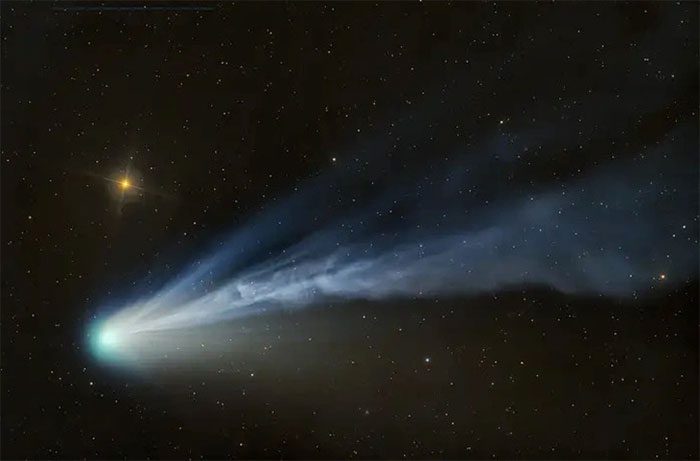The National Aeronautics and Space Administration (NASA) announced that the “Demon Comet” recently experienced an eruption of dust, gas, and ice during its first pass by Earth in 71 years, coinciding with the total solar eclipse on April 8.
According to ABC News, NASA reported that a large and rare comet nicknamed the “Demon” erupted while passing by Earth for the first time in 71 years.

“Demon Comet” sparkles in two colors, white and blue, in space – (Photo: BUSINESS INSIDER).
Previously, this comet had a similar eruption in 2023. The eruption caused it to brighten hundreds of times and earned it the nickname “Demon Comet” after the surrounding fog cloud took on a horn-like shape.
Notably, many people had the opportunity to view the “Demon Comet” while enjoying the once-in-a-century total solar eclipse on April 8.
Astronomers explained that when the sky suddenly darkened due to the absence of sunlight during the total solar eclipse, people could spot stars, planets, and even the “Demon Comet.”
The “Demon Comet” is officially named 12P/Pons-Brooks, a type of cold ice comet.
NASA indicated that this comet was formed from dust, gas, ice, and rock dating back to the formation of the Solar System. Scientists estimate that the “Demon Comet” has a minimum diameter of 17 km.
According to NASA, the “Demon Comet” will reach its closest position to the Sun and shine brilliantly on April 21.
After that, it will come closest to Earth on June 2, giving astronomy enthusiasts a chance to observe it up close.
While Halley’s Comet has an orbital period of 76 years around the Sun, “Demon Comet” has a shorter cycle of 71 years. The last time humanity witnessed this comet was in 1954.


















































